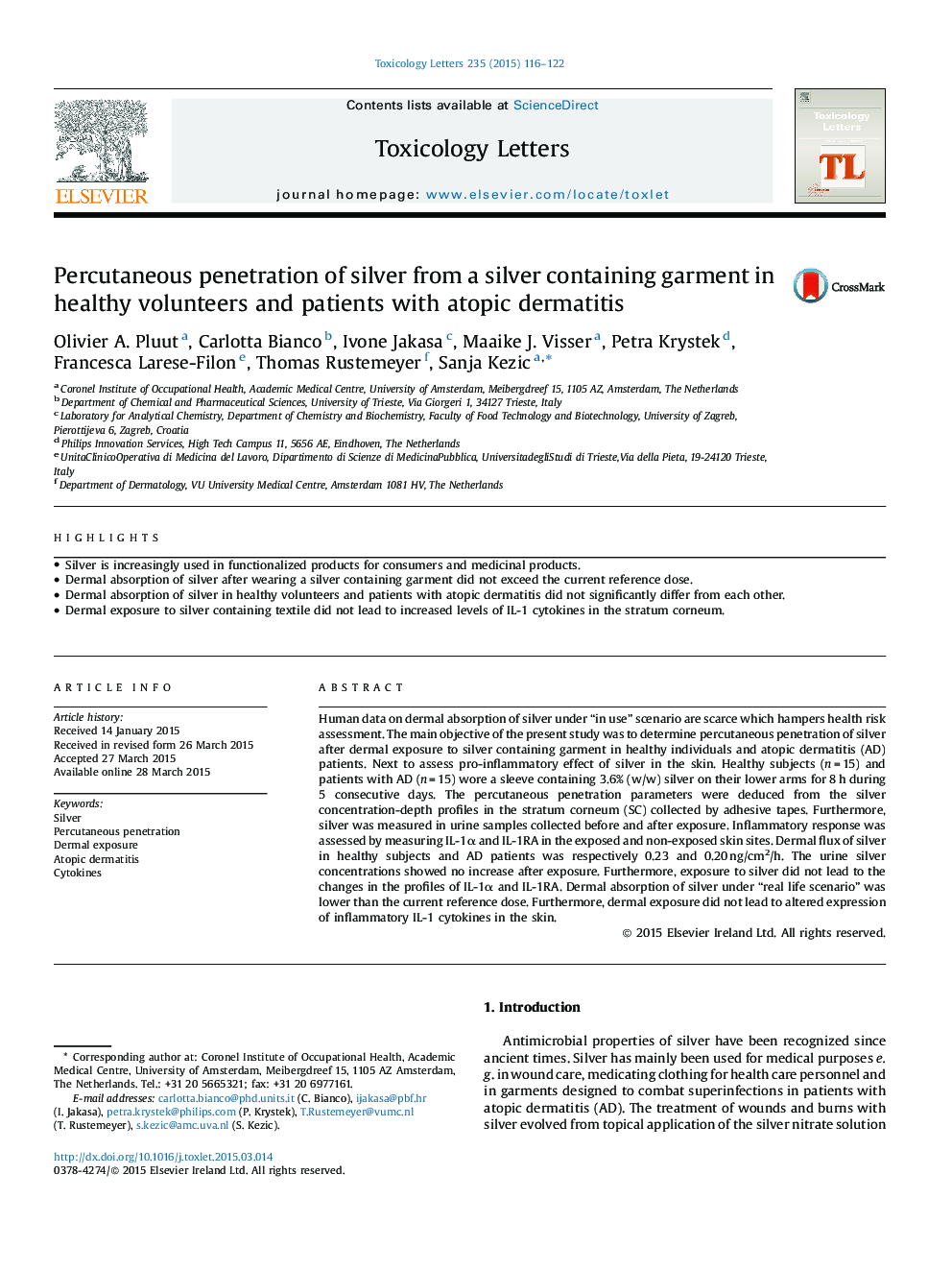| Article ID | Journal | Published Year | Pages | File Type |
|---|---|---|---|---|
| 5859951 | Toxicology Letters | 2015 | 7 Pages |
â¢Silver is increasingly used in functionalized products for consumers and medicinal products.â¢Dermal absorption of silver after wearing a silver containing garment did not exceed the current reference dose.â¢Dermal absorption of silver in healthy volunteers and patients with atopic dermatitis did not significantly differ from each other.â¢Dermal exposure to silver containing textile did not lead to increased levels of IL-1 cytokines in the stratum corneum.
Human data on dermal absorption of silver under “in use” scenario are scarce which hampers health risk assessment. The main objective of the present study was to determine percutaneous penetration of silver after dermal exposure to silver containing garment in healthy individuals and atopic dermatitis (AD) patients. Next to assess pro-inflammatory effect of silver in the skin. Healthy subjects (n = 15) and patients with AD (n = 15) wore a sleeve containing 3.6% (w/w) silver on their lower arms for 8 h during 5 consecutive days. The percutaneous penetration parameters were deduced from the silver concentration-depth profiles in the stratum corneum (SC) collected by adhesive tapes. Furthermore, silver was measured in urine samples collected before and after exposure. Inflammatory response was assessed by measuring IL-1α and IL-1RA in the exposed and non-exposed skin sites. Dermal flux of silver in healthy subjects and AD patients was respectively 0.23 and 0.20 ng/cm2/h. The urine silver concentrations showed no increase after exposure. Furthermore, exposure to silver did not lead to the changes in the profiles of IL-1α and IL-1RA. Dermal absorption of silver under “real life scenario” was lower than the current reference dose. Furthermore, dermal exposure did not lead to altered expression of inflammatory IL-1 cytokines in the skin.
